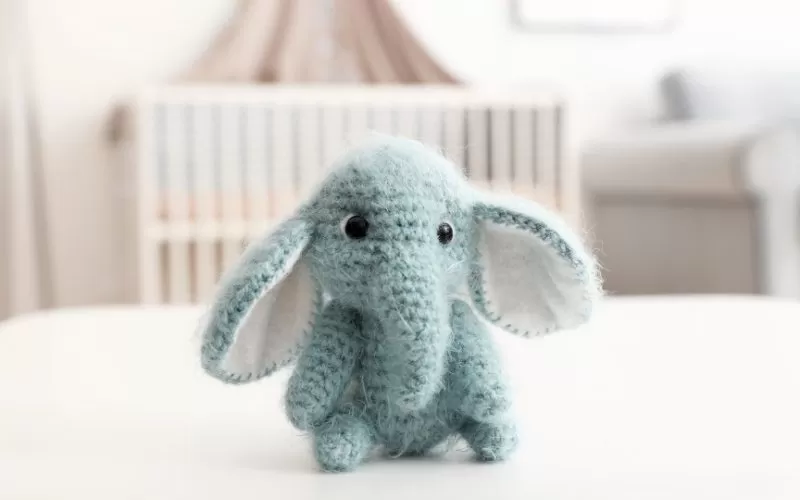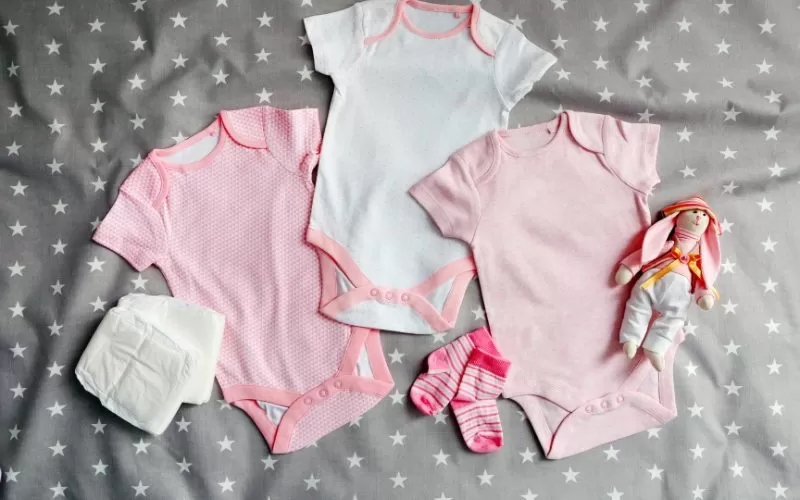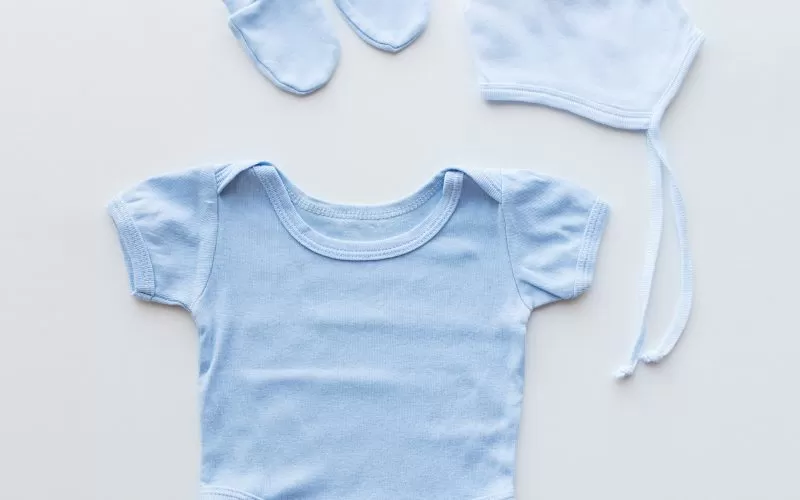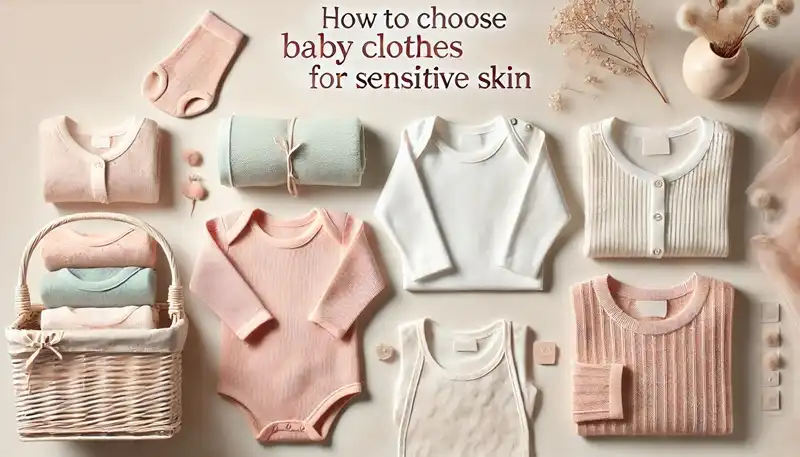Table of Contents
Baby Clothes Sensitive Skin
Choosing the right clothes for your baby is one of the most important decisions you’ll make as a parent, especially if your little one has sensitive skin. Babies’ skin is delicate, and certain fabrics or clothing features can cause irritation or discomfort. In this article, we’ll provide a step-by-step guide to help you make the best choices when buying clothes for your baby. From fabric selection to clothing styles, we’ll cover everything you need to know to ensure your baby’s sensitive skin is well cared for.
By understanding the various factors to consider when choosing newborn clothes for sensitive skin, you can make informed decisions that prioritize your baby’s comfort and health. Our ultimate guide to comfortable baby clothing and apparel will help you make better choices, from fabrics to fasteners. Additionally, choosing the right fabric for your baby’s sensitive skin plays a crucial role in minimizing irritation and keeping your little one comfortable.
For parents looking for more detailed guidance on choosing baby clothing for sensitive skin, we recommend visiting the American Academy of Pediatrics. They provide comprehensive insights into selecting fabrics and styles that prioritize comfort and safety for your little one, ensuring their delicate skin remains irritation-free.
Before diving into the specifics of fabrics and clothing styles, it’s essential to understand the type of sensitive skin your baby might have. Babies can suffer from eczema, allergic reactions, or other skin irritations that could be exacerbated by rough materials or chemicals found in some clothes. Knowing this information allows you to make choices based on their needs.
If you’re unsure about your baby’s skin type, consult a pediatrician for a proper diagnosis. They may recommend hypoallergenic fabrics or treatments to help soothe any skin discomfort your baby may experience. Keep in mind that babies’ skin changes as they grow, so your clothing choices should adapt accordingly.
Choosing the Right Fabric for Your Baby’s Sensitive Skin

The type of fabric you choose for your baby’s clothing is one of the most crucial factors in ensuring their skin remains irritation-free. Natural fibers such as cotton are soft, breathable, and unlikely to cause irritation. Look for labels that indicate 100% cotton or organic cotton, which has been processed without harsh chemicals.
Cotton is naturally hypoallergenic, which makes it the ideal choice for most babies with sensitive skin. It’s also incredibly absorbent, which helps to keep your baby dry, reducing the risk of rashes. If you’re looking for soft, hypoallergenic options, consider products like our Baby Flannel Towel 2 Layer Muslin Swaddle Wrap. These products are made from 100% cotton and are designed with delicate skin in mind.
Organic cotton has the added benefit of being free from pesticides and synthetic fertilizers, making it even gentler on sensitive skin. It’s also eco-friendly, a bonus for parents looking to make sustainable choices.
Benefits of Bamboo Fabric for Baby Clothes

Another excellent choice of fabric for sensitive skin is bamboo. Bamboo fabric is naturally antibacterial, moisture-wicking, and incredibly soft. It’s also hypoallergenic, which means it reduces the likelihood of irritation. Bamboo clothing is ideal for babies with eczema or other sensitive skin conditions.
One of the key advantages of bamboo fabric is its breathability, which helps to regulate your baby’s temperature, keeping them cool in summer and warm in winter. This adaptability makes bamboo clothing perfect for year-round wear.
Avoid Synthetic Fabrics and Harsh Dyes
Many synthetic fabrics such as polyester, nylon, or acrylic can trap heat, causing discomfort and potentially leading to skin rashes. These materials are often less breathable than natural fibers, which can result in excessive sweating and irritation. Moreover, brightly colored baby clothes may have been treated with chemical dyes, which can irritate sensitive skin.
Stick to neutral or light colors made with non-toxic dyes whenever possible. Our Chill Vibes Toddlers 4 Piece Onesie Collection is an excellent choice, offering a gentle feel with no harsh chemicals used in the dyeing process. This collection is made with soft, breathable fabrics that won’t irritate sensitive skin.
Another synthetic fabric to avoid is fleece, which, while warm, can be abrasive on the skin. If warmth is a priority, opt for cotton-based or bamboo-based clothing that offers a soft, soothing touch.
Newborn Clothes for Sensitive Skin: What to Consider

When purchasing newborn clothes, there are several factors to keep in mind beyond just the fabric. One key consideration is how easy the clothes are to put on and take off. Newborns have sensitive skin, and even minor friction from clothes being pulled over their heads can cause discomfort. Look for items with wide neck openings, snap closures, or buttons for ease of dressing.
Seams should be soft, and tags should ideally be absent or very minimal to avoid causing irritation. Clothes should be snug but not tight, as tight-fitting clothes can lead to friction and skin irritation, especially in babies with eczema or other conditions.
Newborn clothes for sensitive skin: what to consider include softness, breathability, and ease of wear. Soft seams and smooth surfaces can prevent irritation. For an ultimate guide to comfortable baby clothing and apparel, our Soft Cotton Baby Romper Collection provides comfort and flexibility, making it ideal for sensitive skin.
Choosing the Right Fasteners and Closures
The fasteners used in baby clothes can also affect comfort, especially for babies with sensitive skin. Avoid clothing with zippers that come into direct contact with the skin, as they can cause chafing or irritation. Instead, opt for clothes with snaps or Velcro, which are gentler on your baby’s delicate skin.
Make sure that any buttons, snaps, or Velcro fasteners are securely attached and made from non-toxic materials. Metal fasteners, in particular, can sometimes trigger allergic reactions in babies with extremely sensitive skin. Choosing nickel-free options is always a good idea.
Climate Considerations for Baby Clothes

While fabric and fasteners are essential considerations, climate also plays a big role in your baby’s comfort. Babies are more susceptible to changes in temperature, and certain fabrics will either trap too much heat or not offer enough insulation. For warmer climates, choose lightweight, breathable materials like cotton or muslin. In colder environments, layered clothing made from soft, insulating fabrics like bamboo or fleece-lined cotton can provide comfort without irritation.
Always be mindful of layering too much. Overheating can lead to skin rashes, so make sure your baby is warm but not excessively bundled.
Prioritize Comfort Over Style

While it’s tempting to dress your baby in cute and trendy outfits, comfort should always come first, especially if your baby has sensitive skin. Softness, breathability, and ease of movement are key factors to consider. Clothes with elastic-free waistbands, flat seams, and tagless labels can help prevent skin irritation.
For example, our Chill Vibes Toddlers 4 Piece Onesie Collection prioritizes comfort without compromising on style. The onesies are made with soft cotton that is breathable and comfortable for all-day wear, making them perfect for babies with sensitive skin.
By prioritizing comfort, you ensure that your baby feels good in their clothes, which is far more important than appearances.
Ultimate Guide to Comfortable Baby Clothing and Apparel
Finding the right clothing options for sensitive skin doesn’t have to be complicated. Follow these tips, and you’ll have a better chance of ensuring your baby is comfortable and happy. The ultimate guide to comfortable baby clothing and apparel is simple: always choose soft, natural fabrics, avoid harsh chemicals, and prioritize comfort over style.
Don’t forget to explore our range of clothing options, such as the Baby Flannel Towel 2 Layer Muslin Swaddle Wrap and the Chill Vibes Toddlers 4 Piece Onesie Collection, to find soft, skin-friendly choices.
Conclusion: Choosing the Right Fabric for Your Baby’s Sensitive Skin
In conclusion, when choosing baby clothes for sensitive skin, always prioritize natural, chemical-free fabrics like organic cotton or bamboo. Avoid synthetic fabrics and harsh dyes that could cause irritation. Whether you’re looking for lightweight, breathable fabrics for warmer climates or warm, cozy clothes for winter, make sure to choose high-quality materials that prioritize comfort.
Remember, choosing the right fabric for your baby’s sensitive skin can make all the difference in keeping your baby happy and free from skin irritations. Our curated collection of Newborn Clothes for Sensitive Skin is designed with your baby’s needs in mind—helping you make the best choices for your little one.
By following this guide, you’ll be well on your way to making informed decisions when choosing baby clothes for sensitive skin. Don’t hesitate to explore our extensive product offerings to find the perfect clothing options for your baby today.


